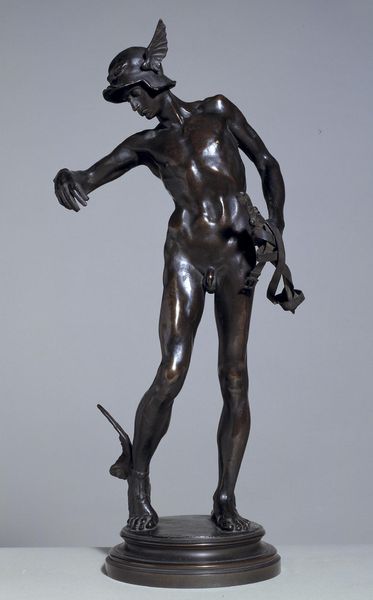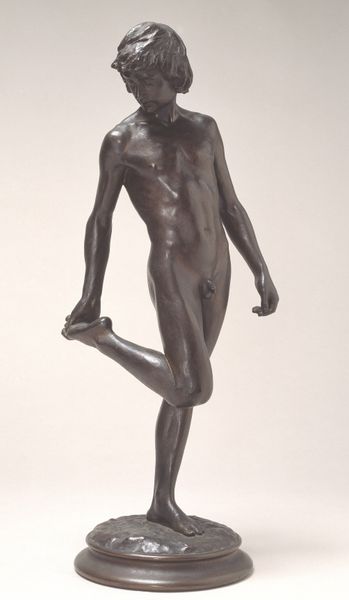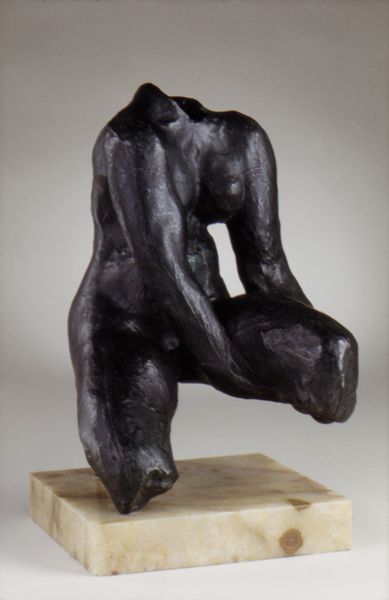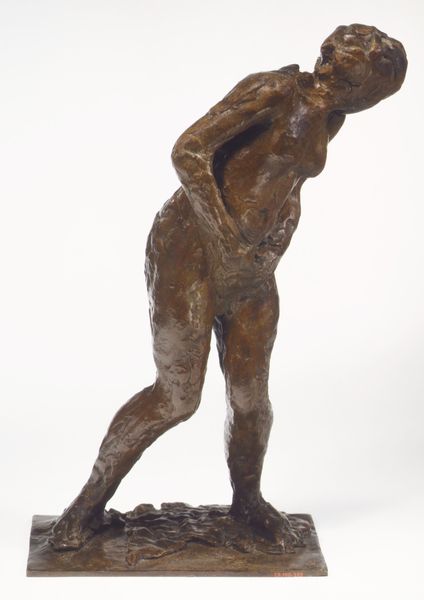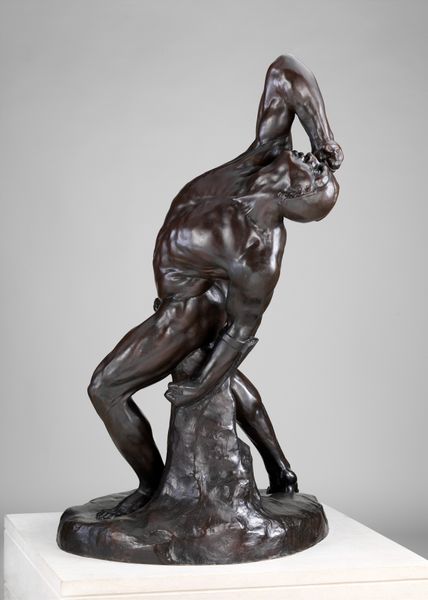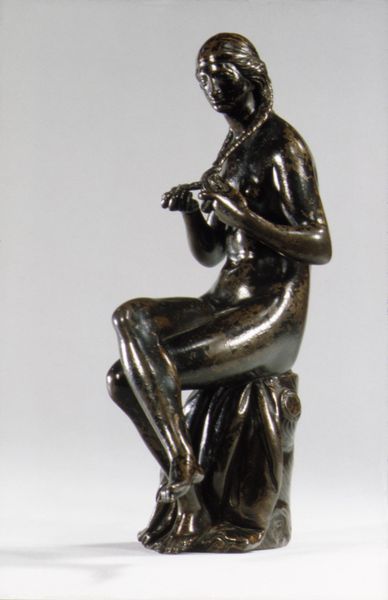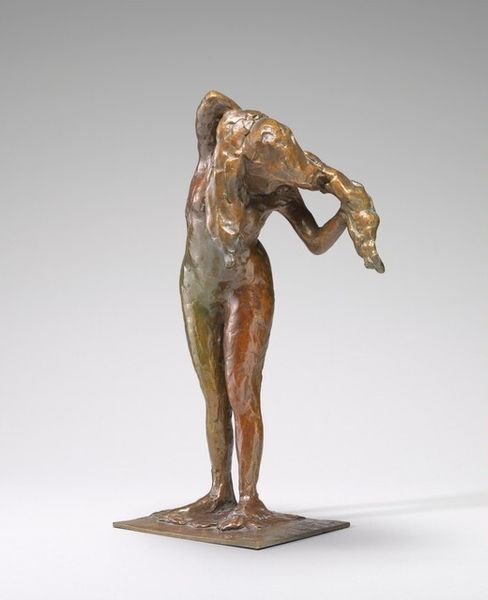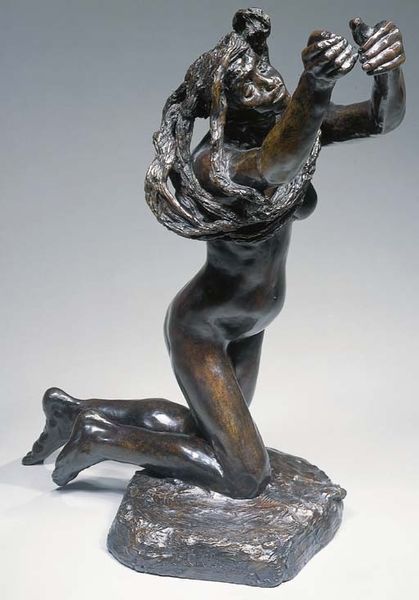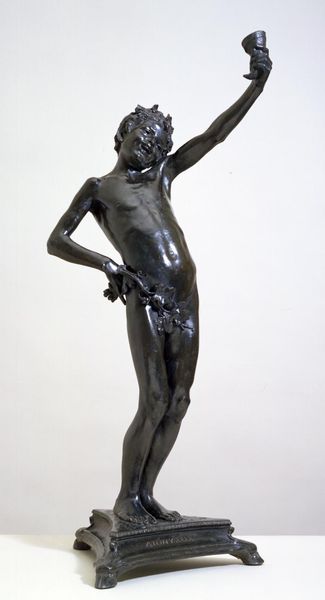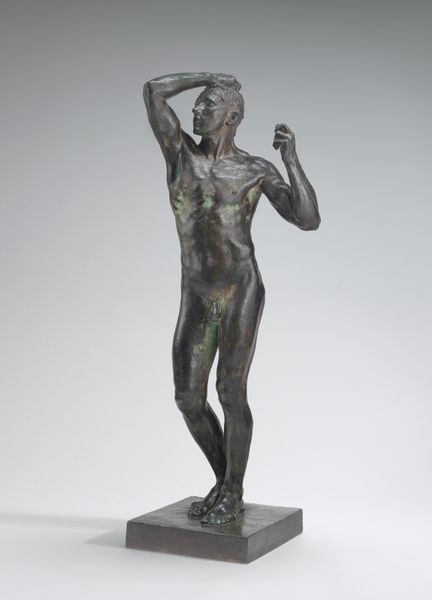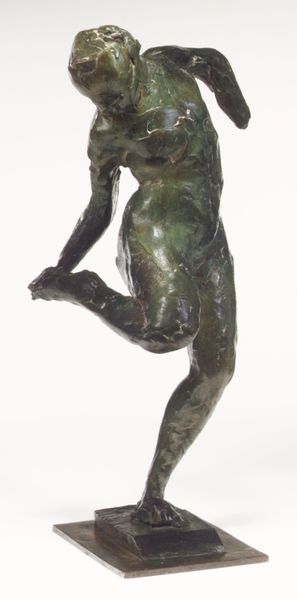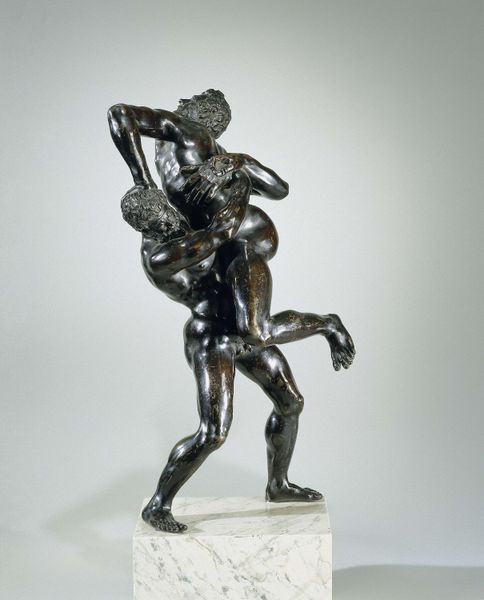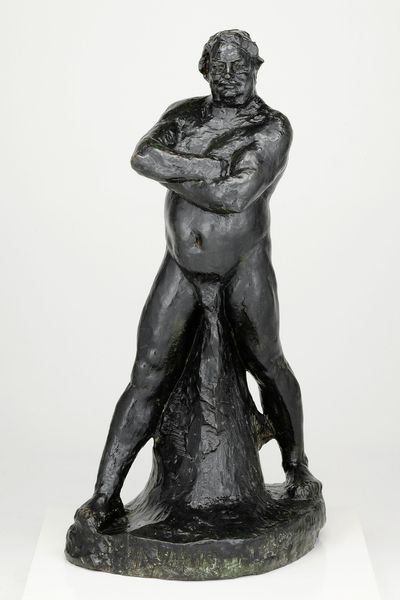
bronze, sculpture
#
sculpture
#
bronze
#
figuration
#
sculpture
#
history-painting
#
academic-art
Dimensions: 25 cm (height) x 7.5 cm (width) x 11 cm (depth) (Netto)
Curator: This is August Saabye’s bronze sculpture, "A Dancing Satyr Holding up the Bacchus," created in 1859, currently held at the SMK, the National Gallery of Denmark. Editor: The polished bronze catches the light so nicely. The composition makes me feel lighthearted, it almost sways with the implied movement, though that poor satyr looks like he's about to tip over backwards! Curator: Saabye was certainly playing into established classical themes with this piece. The figure of Bacchus, the Roman god of wine, is being held aloft by a satyr, a creature associated with revelry and the wilder sides of life. It evokes the period’s interest in mythological subjects as tools for allegory, with political meaning. Editor: It makes you think about the labor involved, too. Consider the bronze casting process in the mid-19th century: the lost-wax casting, the mold-making. It's easy to forget the many hands and material transformations needed to arrive at the final sleek, almost idealized object. It’s a carefully made work, even if the figures give an illusion of spontaneity. Curator: Exactly, that duality between crafted skill and perceived lightness points to the artistic milieu in the mid-19th century, where academies championed specific aesthetics rooted in an idealized historical past. It's intriguing how Saabye navigates those established notions to gain acceptance and critical praise, since the political establishment at this time really loved the "good old days." Editor: Thinking about labor again, this also brings up the whole question of class and patronage. I wonder, did the original owner also appreciate this work in its full materiality, reflecting the means by which this beauty became a possession? Curator: An important question. Public taste often guided what could be made and sold in a place like Copenhagen. The imagery needed to appeal, or risk failing to be a successful commission. Editor: I appreciate your highlighting the social conditions in Saabye’s artistic practice, that shapes how artists can sell themselves. I always end up circling back to the touch, and sweat and resources required. The way Saabye coaxed this scene into being… there is skill. Curator: It’s the sculpture’s engagement with the cultural narratives and patronage systems that fascinates me, because these are the powerful, enduring structures through which images circulate and acquire significance. Editor: True enough, I have to admit, there's a palpable, exuberant energy about this bronze duo despite its being a fixed historical object!
Comments
No comments
Be the first to comment and join the conversation on the ultimate creative platform.
